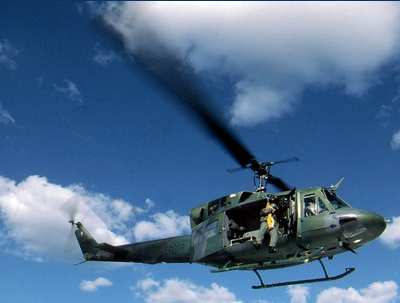AD 2021-15-14 Prompted By Multiple Events Involving Failure Of The Tail Boom Attach Structure Including The Bolts
The FAA is adopting a new airworthiness directive (AD) for various restricted category helicopters, originally manufactured by Bell Textron Inc. (Bell). This AD was prompted by multiple events involving failure of the tail boom attach structure including the bolts.

This AD requires revising the existing Rotorcraft Flight Manual (RFM) for your helicopter to incorporate preflight checks; removing paint and sealant, and cleaning; repetitive inspections of structural components that attach the tail boom to the fuselage; and depending on the outcome of the inspections, repairing or replacing components, or re-bonding the structure. The FAA is issuing this AD to address the unsafe condition on these products. This AD is effective August 30, 2021.
Supplementary Information: The FAA issued a notice of proposed rulemaking (NPRM) to amend 14 CFR part 39 by adding an AD that would apply to Model EH-1H, EH-1X, HH-1H, HH-1N, UH-1D, UH-1M, UH-1N, and UH-1V helicopters operating under experimental airworthiness certificates; and restricted category type certificated Model HH-1K, TH-1F, TH-1L, UH-1A, UH-1B without Supplemental Type Certificate (STC) No. SR00026DE installed, UH-1E, UH-1F, UH-1H, UH-1L, and UH-1P helicopters.
The NPRM listed the type certificate holders for these restricted category models as Arrow Falcon Exporters Inc.; AST, Inc.; Bell; California Department of Forestry; Global Helicopter Technology, Inc.; Hagglund Helicopters, LLC; International Helicopters, Inc.; JJASPP Engineering Services, LLC; JTBAM, Inc.; Northwest Rotorcraft, LLC; Red Tail Flying Services, LLC; Richards Heavylift Helo, Inc.; Robinson Air Crane, Inc.; Rotorcraft Development Corporation; San Joaquin Helicopters; Smith Helicopters; Southwest Florida Aviation International, Inc.; Tamarack
Helicopters, Inc., and West Coast Fabrications.
The NPRM published in the Federal Register on October 31, 2019 (84 FR 58341). The NPRM was prompted by a series of events involving failure of the tail boom attach structure on several restricted category military surplus helicopters.
In the NPRM, the FAA proposed to require revising the existing RFM for your helicopter to incorporate pre-flight checks; removing paint and sealant, and cleaning structural components that attach the tail boom to the fuselage; repetitive inspections of the cleaned structural components; repairing scratches, nicks, gouges, tears, and corrosion within allowable limits; replacing structural components with non-repairable damage, cracks, buckling, or distortion; removing loose, missing, or smoking rivets from service; re-bonding structures with dis-bonds; and removing loose bolts and selflocking nuts from service and replacing them with new bolts and new self-locking nuts. The FAA is issuing this AD to prevent separation of the tail boom from the helicopter, and subsequent loss of control of the helicopter.
The manufacturer of the SDOS actuator, General Aerospace, has changed the design to have a stronger joint between the inner tube and the “back end” bracket that uses blind rivets rather than pins, together with an improved shape of the “catching” bracket. This redesign addressed the aforementioned part separation of the SDOS actuator, and the redesigned actuator became part number BOE-2001-901H. General Aerospace then modified part number BOE-2001-901H to include more detailed safety markers in new locations that display the warnings more clearly to maintenance personnel. That redesign addressed the aforementioned extension of the SDOS actuator from release of the catch hook. With the addition of the more detailed safety markers in the new locations, the SDOS actuator part number changed from BOE-2001-901H to BOE-2001-901J. General Aerospace Service Bulletin BOE-2001-901-71-01, dated November 2, 2019, which is referenced in Boeing Service Bulletin 737-71-1911, Revision 1, dated
September 10, 2020, provides instructions for changing a BOE-2001-901H SDOS actuator to a BOE-2001-901J SDOS actuator.
The NPRM therefore proposed to require replacing each affected SDOS actuator with a new SDOS actuator, and verifying that the new safety markers are installed in the proper locations on the SDOS actuator.
The FAA is issuing this AD to address the possible separation of the SDOS actuator, and the visual obstruction of the SDOS actuator safety marker, either of which, during maintenance, could cause injury to maintenance personnel or damage to the airplane.
 ANN's Daily Aero-Linx (05.02.24)
ANN's Daily Aero-Linx (05.02.24) ANN's Daily Aero-Term (05.02.24): Touchdown Zone Lighting
ANN's Daily Aero-Term (05.02.24): Touchdown Zone Lighting Aero-News: Quote of the Day (05.02.24)
Aero-News: Quote of the Day (05.02.24) ANN FAQ: Contributing To Aero-TV
ANN FAQ: Contributing To Aero-TV NTSB Final Report: Cirrus Design Corp SR20
NTSB Final Report: Cirrus Design Corp SR20



